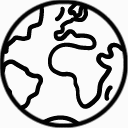

The first important step of becoming a water steward, is to gain an understanding of the water challenges, how these are impacted by the business, and then take measures to address them.
For H&M Group, strengthening its water management has been done through raising internal water awareness among staff and suppliers, and through measuring and defining actions to address the company’s water impact. Between 2013-2016, H&M Group educated around 75 000 staff – ranging from functions in production, to design, to management, to stores – on water risks and ways to mitigate these in the operations.
“It was an important journey that brought a greater internal understanding for sustainability issues in general and for water issues in particular, which facilitated our teams efforts in the area”, Shariful Hoque, Global Water Responsible at Sustainability-Global Production at H&M Group said.
The next step was to take action. Supported by WWF, H&M Group set targets to reduce the company’s water impact in the supply chain.
In 2015, all H&M’s tier 1 suppliers adopted the Higg Index, a tool developed by the Sustainable Apparel Coalition (SAC) to measure and score companies’ sustainability performance. The collection of performance data in the year that followed helped give detailed indication of H&M’s garment producers’ water performance and could inform water targets for the business.
“Through building an internal water governance structure, we can collect water data and track sustainability performance in the supply chain. Water risks are assessed on a regular basis to inform water targets and actions, which has paved way for improvements in suppliers’ water performance”, said Shariful Hoque.
In 2018, H&M Group announced its “water roadmap for production”, created with support from WWF. The roadmap included defined targets for water efficiency, quality and circularity in the value chain to be reached by 2022.
During 2021, the work on improving water performance will continue to deliver on the current water roadmap. For H&M Group’s upcoming water strategy, new progressive targets and actions tailored to local context will be formulated, set to be released during 2022.
H&M Group’s Internal Water Work in Numbers:
Water Quality:
- 2016-2018: Water and chemical management standards were improved in +500 wet processing H&M Group supplier factories, as part of the partnership program.
- 2018-today: Capacity trainings under FEM (SAC) and similar were held by H&M Group. One example is the cleaner production water program trainings in 2018-2019 for 2,636 factory managers in Bangladesh, China, Indonesia, India & Turkey.
- 2017-2019: Development and implementation of internal operational procedures. H&M Group set a target for 100% suppliers to become BSR compliant and in 2017, 84 % of suppliers had reached that target. In 2018, H&M Group shifted to Zero Discharge of Hazardous Chemicals standard (ZDHC) wastewater quality standard, which holds more progressive criteria on wastewater treatment. In 2020, H&M Group’s textile and leather suppliers achieved 99 .9% ZDHC MRSL compliance for wastewater and 88% compliance for chemical inputs .
Water Circularity:
- 2019-2020: In 2019, 13 % of total production water consumption was recycled. A year later, this number had risen to 17.6 %.
Water Efficiency:
- In 2020, production water usage had decreased with 7,5 % compared to 2017 baseline (l/kg, l/pc, l/m)*.
- In 2020, 85 % of H&M Group stores had water efficient equipment.
